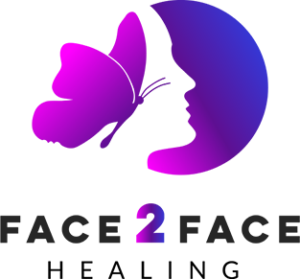As a healthcare provider and cancer survivor, I understand the frustration in finding the right healthcare provider in helping with your healing process. Please check out this informative article about the role of the healer to learn more.
As a healthcare provider and cancer survivor, I understand the frustration in finding the right healthcare provider in helping with your healing process. Please check out this informative article about the role of the healer to learn more.
“When we or our family members are suffering, we want it all. We want to see the smartest clinician in the room who can cut through the chaos, make sense of the symptoms, and come up with a definitive treatment. We want understanding and caring. We want the confidence that helps us believe that following a specific course of action will be helpful. We want someone to provide us with the information we need to make the best decisions. And we need a person who can understand how difficult it is to change from patterns of behavior that have served us well in the past. We want that person to be non-judgmental and help us move to a different course of action.”
Read the entire article by Dr. Glick and Dr. Carol Greco at Centers for Integrative Medicine:
Some kids respond better to the tough coach or teacher. Others, or perhaps those same children at different times, need someone more nurturing and supportive in order to reach their potential. The same is true about our connection with healthcare providers. As with any other relationship, it’s the interaction between people that’s important, as much as what each person brings to the party.
When things are going well, physicians or other healthcare providers can be our touchstone; we check in periodically and call on them when problems develop. Fortunately, because of medical advances and a strong knowledge base, providers can usually guide us around most health concerns relatively easily. For the times when health conditions create greater challenges, we reflect more on what we want and need from our providers.
What are the archetypes or classic roles of healers? House was such a successful TV series partly because of how outrageous Dr. House could be. While we’ve all known or heard of physicians who flunked Bedside Manner 101, the idea that a physician has to be arrogant to be brilliant is, thankfully, mainly a Hollywood phenomenon rather than a reality.
Let’s look at the roles that health care providers may take:
Outstanding diagnostician (Dr. House without the attitude): Brilliant, experienced, can find the cause to any problem, point to the appropriate test, and direct us to the cure.
Empathic clinician (if you’re over 50, think of Marcus Welby and his caring nurse Consuela): It is often suffering that brings us to the healthcare setting. Finding someone who can understand and make an emotional connection can ease the experience of suffering.
Mystical or shamanistic healer: This involves the power to heal, enabled by the patient. Particularly in culturally-based healing systems, this can be quite powerful. Even in Western Medicine, a patient’s connection to the provider and belief in the treatment can be an incredible force for healing.
Educator: Knowledge is important. The key is for the healthcare practitioner to provide the level of information that is most helpful for the particular patient at a specific point in time. Some of this depends on health literacy, but even the most informed consumer can have their brain turn to mush when faced with a health challenge.
Agent of change: For most of the chronic health problems affecting us individually and at a public health level, improving our health boils down to changing our health behaviors. We know what we need to do: Exercise more, lose a bit of weight, and get more sleep. We may find a giant chasm between our knowledge and our motivation. So the most effective clinician can set the stage to motivate us to make needed changes.
Where does this leave us? When we or our family members are suffering, we want it all. We want to see the smartest clinician in the room who can cut through the chaos, make sense of the symptoms, and come up with a definitive treatment. We want understanding and caring. We want the confidence that helps us believe that following a
specific course of action will be helpful. We want someone to provide us with the information we need to make the best decisions. And we need a person who can understand how difficult it is to change from patterns of behavior that have served us well in the past. We want that person to be non-judgmental and help us move to a different course of action.
That’s not too much to expect, so where do things break down? There are three common scenarios in which our expectations may fall short of what providers can deliver:
“Curable” versus chronic conditions: Strep throat and appendicitis have cures. However, much of health care is centered on helping individuals with chronic health problems. Conditions such as high blood pressure, diabetes, asthma, heart disease, chronic low back pain, and migraines. We may come in hoping for a cure and face disappointment when the focus of treatment is on management strategies. What can we do to limit the progression of the disease and keep symptoms from interfering greatly with our lifestyles? These strategies commonly involving diet, exercise, and mind-body practice that can mitigate the symptoms. Less dramatic than TV, but so is life.
Unexplained symptoms: At the Center for Integrative
Medicine, approximately one fifth of patients seek care for problems falling under the heading of medically unexplained symptoms. This is not a medical diagnosis; rather it is exactly what it says. Someone has physical symptoms that do not fall into any specific pattern and tests don’t point to a specific medical diagnosis. Often, patients are focused on seeing another physician or getting another test to find the elusive answer. This leads to frustration, both on the part of the patient and the physician. Patients often perceive that their symptoms are being dismissed as psychological or stressrelated.
Conditions that don’t improve with treatment: Many people have conditions that don’t respond to the treatment. Prime examples are depression or chronic pain, to which many individuals may respond only partially to standard medical and therapy approaches. For some, the treatment creates problems, such as blunted mood from antidepressants or erectile dysfunction from blood pressure medications.
Why do people seek complementary or integrative therapies? Frequently, they have conditions that are chronic, disabling, and not responsive to traditional therapies. 34 percent of Americans pursue complementary/integrative therapies at a cost of approximately $30 billion per year. This suggests that they’re receiving something from these approaches that they don’t get from more traditional medical care. There are specific treatment effects from these therapies. Take acupuncture, for example. In a meta-analysis, Vickers and his colleagues analyzed the results of close to 18,000 individuals who participated in 29 different acupuncture research trials for conditions including intractable migraines, neck and low back pain, and knee arthritis. They found that improvement in pain after acupuncture was greater than what was seen with placebo or sham acupuncture treatment. This important research led the UPMC Health Plan to provide insurance coverage for these conditions in their commercial and individual policies.
Independent of the specific benefit of complementary approaches, there are intangibles that may influence patients’ symptoms and well -being. These non-specific or contextual factors impact both complementary and traditional approaches. Projects by Dr. Carol Greco, the Research Director of the Center for Integrative Medicine, are helping us identify and measure these factors, using questionnaires called the HEAL (Healing Encounters and Attitudes Lists). The next step is to understand and enhance these nonspecific factors to help individuals get the most benefit from whatever therapies they pursue.
One of the factors that the HEAL research identifies is the patient/provider connection. Researchers at Harvard investigated this by comparing an aloof vs. an empathic acupuncturist. No surprise, for most patients, improvement was greatest with empathy. In our studies, we’re measuring how patients perceive the treating therapist. Do patients trust the clinician? Do they feel listened to? Does the formulation of the problem fit with the patient’s understanding?
Returning to the personality styles of healers, some patients may respond better to a physician who is more directive and prescriptive, dictating exactly what the problem is and what the patient needs to do. For some patients, a sense of partnership, interaction and interpersonal connection are essential. The most effective clinicians are sensitive to the patient’s needs at the moment and are able to shift gears to engage the patient in a course of treatment or behavior change. At the same time, we recognize that a therapeutic relationship is a relationship. Patients may relate best to physicians or clinicians who have an interpersonal style most congruent with their needs.
Independent of the prescribed treatment, the relationship between the health care practitioner and the patient potentially carries great impact on healing and wellness. So, when seeking a healthcare provider or a new treatment, take some time to assess: what is it that you are looking for in a provider? What are you willing to do, or to change, to enhance your own health? Come to your visit ready to explore these issues with the provider: receptive, open, and expressing yourself as best you can!





